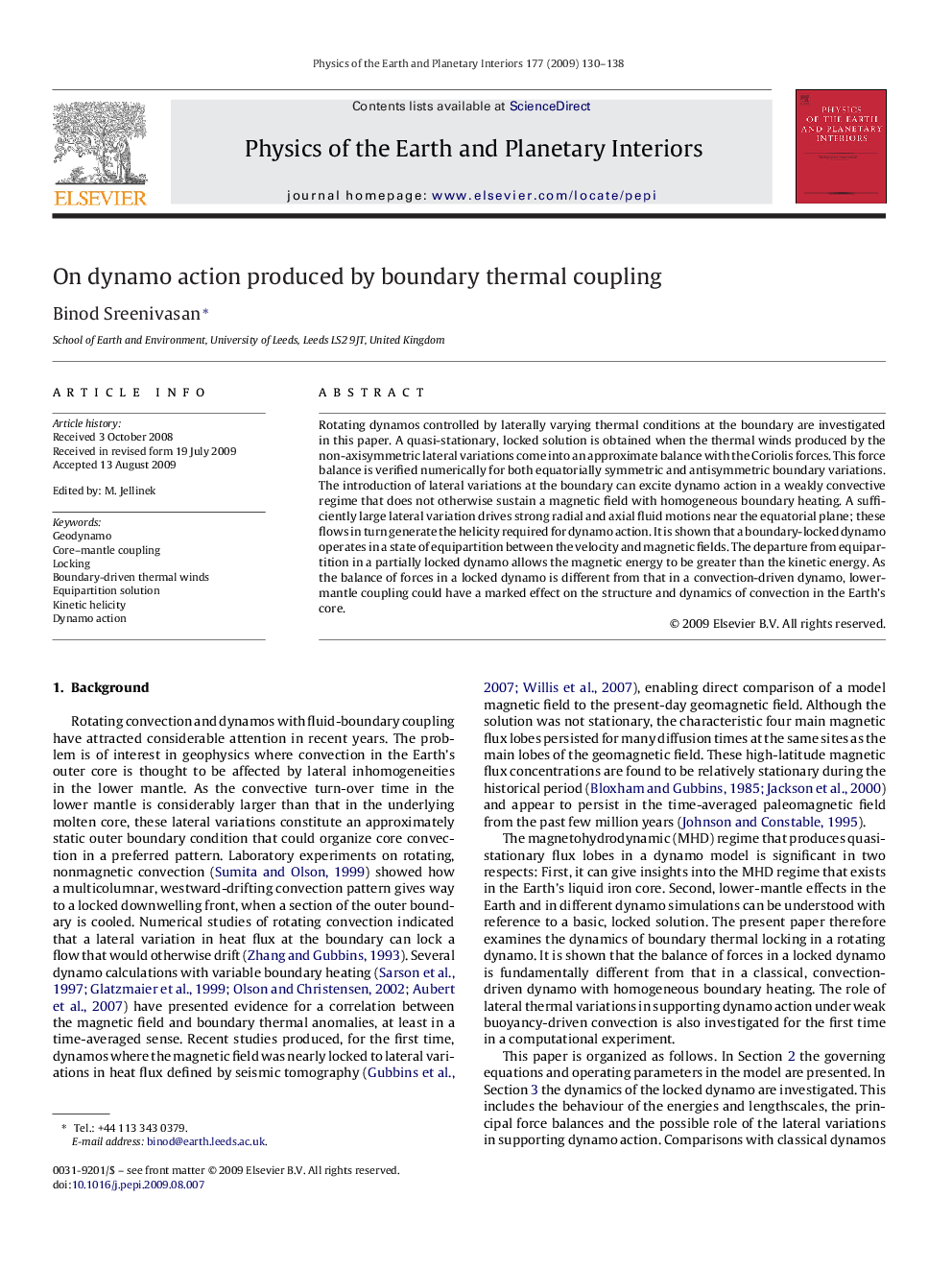| Article ID | Journal | Published Year | Pages | File Type |
|---|---|---|---|---|
| 4742339 | Physics of the Earth and Planetary Interiors | 2009 | 9 Pages |
Abstract
Rotating dynamos controlled by laterally varying thermal conditions at the boundary are investigated in this paper. A quasi-stationary, locked solution is obtained when the thermal winds produced by the non-axisymmetric lateral variations come into an approximate balance with the Coriolis forces. This force balance is verified numerically for both equatorially symmetric and antisymmetric boundary variations. The introduction of lateral variations at the boundary can excite dynamo action in a weakly convective regime that does not otherwise sustain a magnetic field with homogeneous boundary heating. A sufficiently large lateral variation drives strong radial and axial fluid motions near the equatorial plane; these flows in turn generate the helicity required for dynamo action. It is shown that a boundary-locked dynamo operates in a state of equipartition between the velocity and magnetic fields. The departure from equipartition in a partially locked dynamo allows the magnetic energy to be greater than the kinetic energy. As the balance of forces in a locked dynamo is different from that in a convection-driven dynamo, lower-mantle coupling could have a marked effect on the structure and dynamics of convection in the Earth's core.
Related Topics
Physical Sciences and Engineering
Earth and Planetary Sciences
Geophysics
Authors
Binod Sreenivasan,
